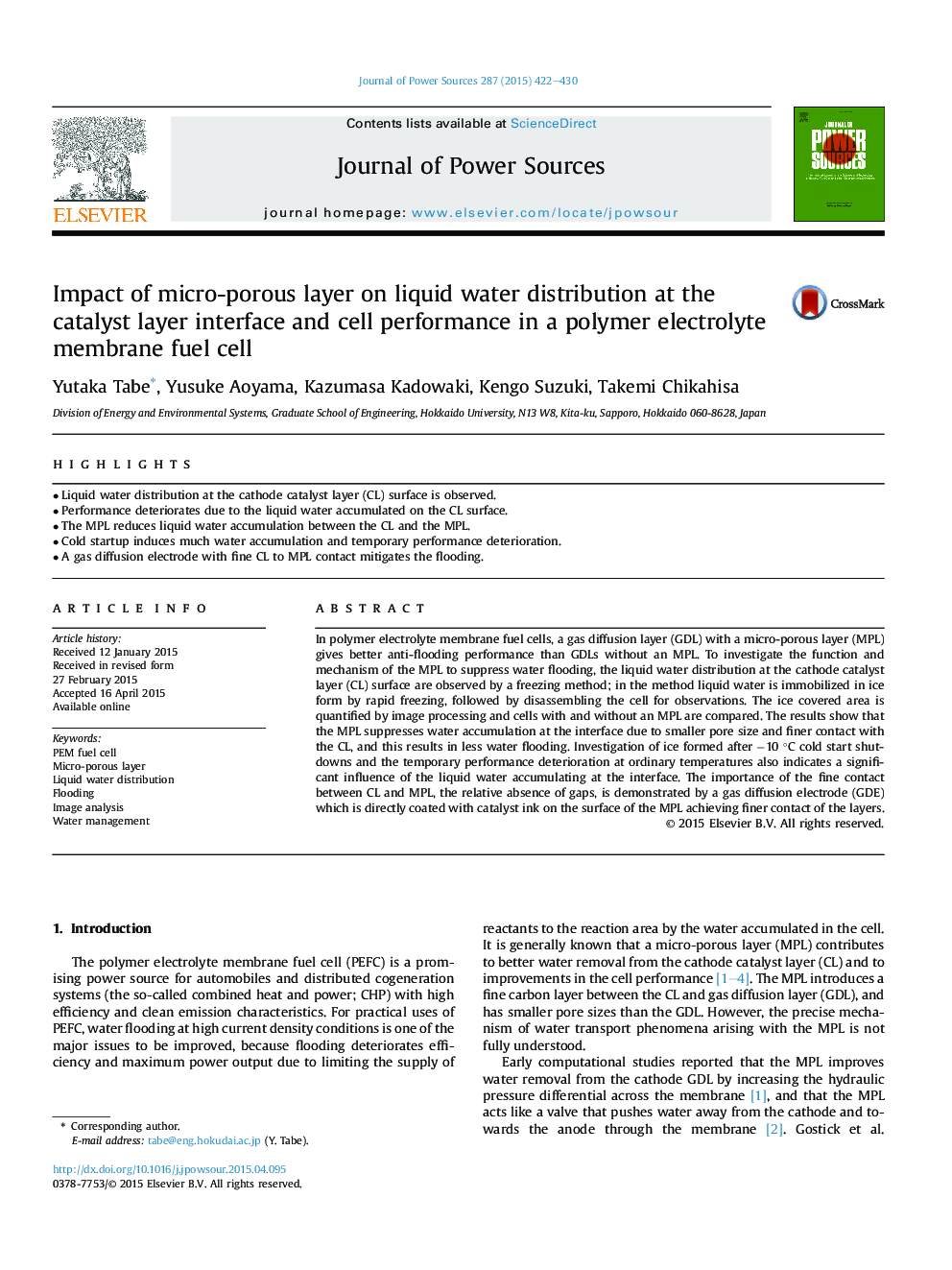| Article ID | Journal | Published Year | Pages | File Type |
|---|---|---|---|---|
| 7732048 | Journal of Power Sources | 2015 | 9 Pages |
Abstract
In polymer electrolyte membrane fuel cells, a gas diffusion layer (GDL) with a micro-porous layer (MPL) gives better anti-flooding performance than GDLs without an MPL. To investigate the function and mechanism of the MPL to suppress water flooding, the liquid water distribution at the cathode catalyst layer (CL) surface are observed by a freezing method; in the method liquid water is immobilized in ice form by rapid freezing, followed by disassembling the cell for observations. The ice covered area is quantified by image processing and cells with and without an MPL are compared. The results show that the MPL suppresses water accumulation at the interface due to smaller pore size and finer contact with the CL, and this results in less water flooding. Investigation of ice formed after â10 °C cold start shutdowns and the temporary performance deterioration at ordinary temperatures also indicates a significant influence of the liquid water accumulating at the interface. The importance of the fine contact between CL and MPL, the relative absence of gaps, is demonstrated by a gas diffusion electrode (GDE) which is directly coated with catalyst ink on the surface of the MPL achieving finer contact of the layers.
Keywords
Related Topics
Physical Sciences and Engineering
Chemistry
Electrochemistry
Authors
Yutaka Tabe, Yusuke Aoyama, Kazumasa Kadowaki, Kengo Suzuki, Takemi Chikahisa,
